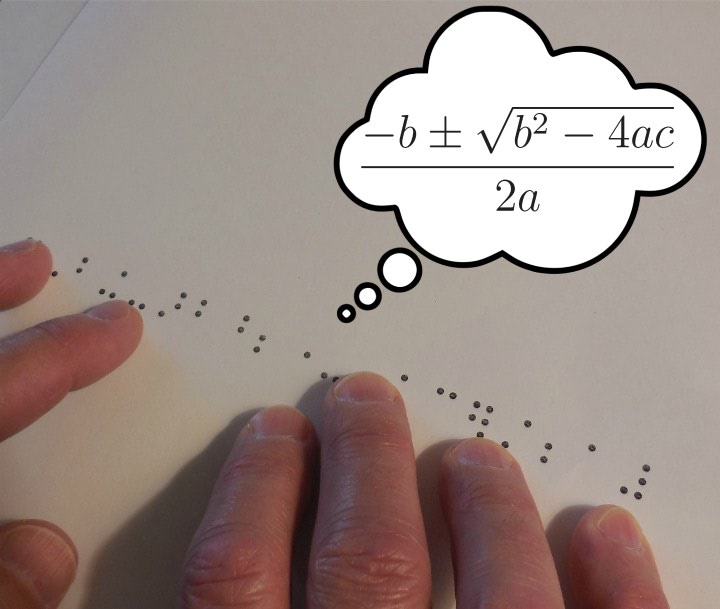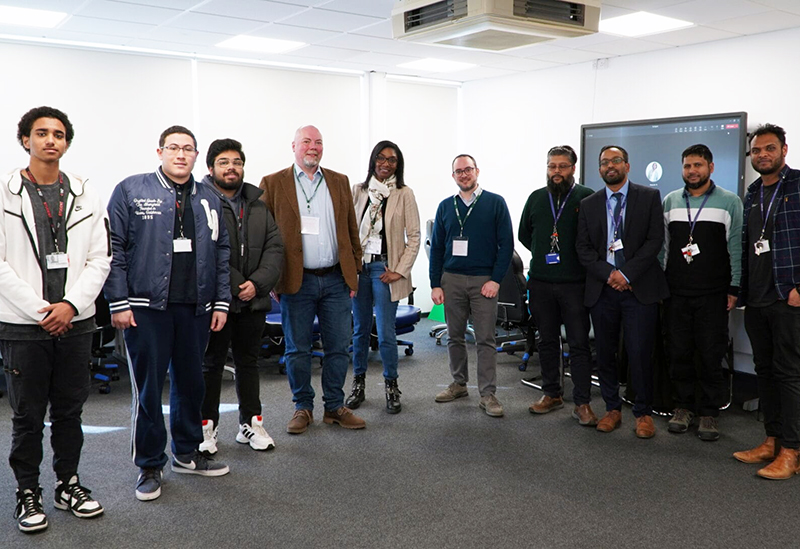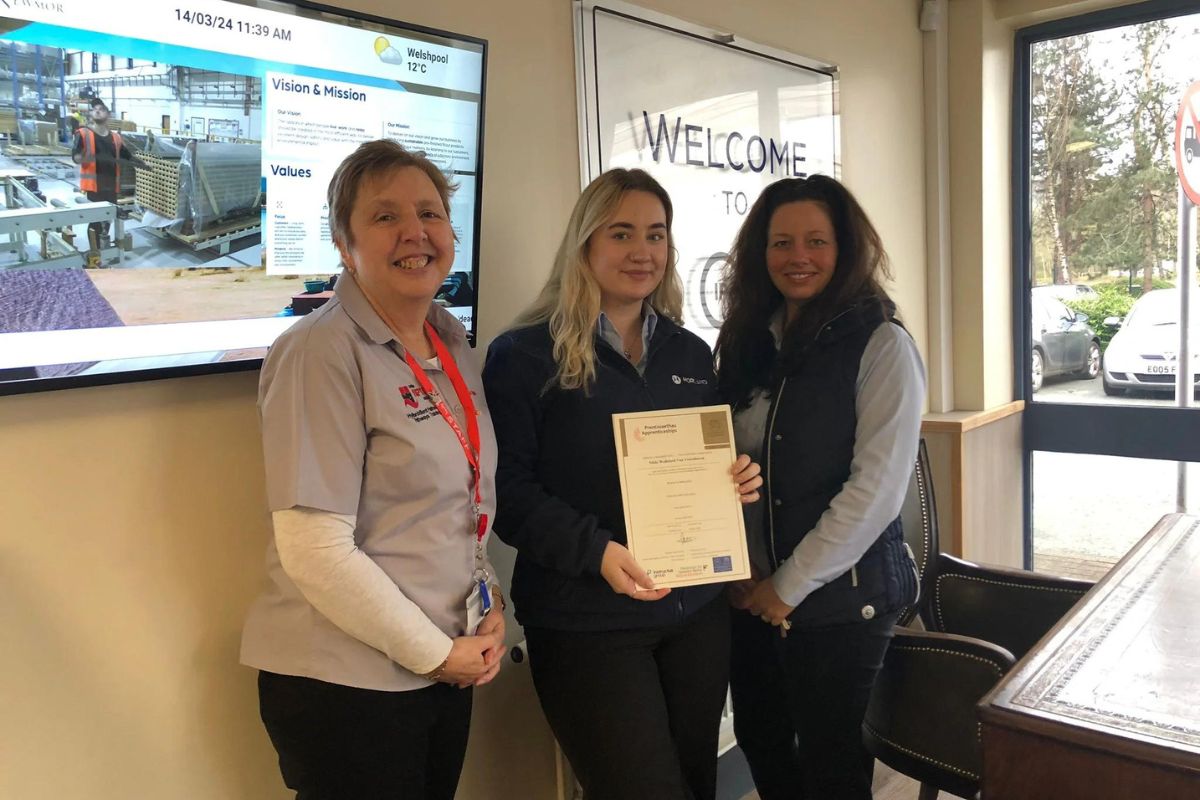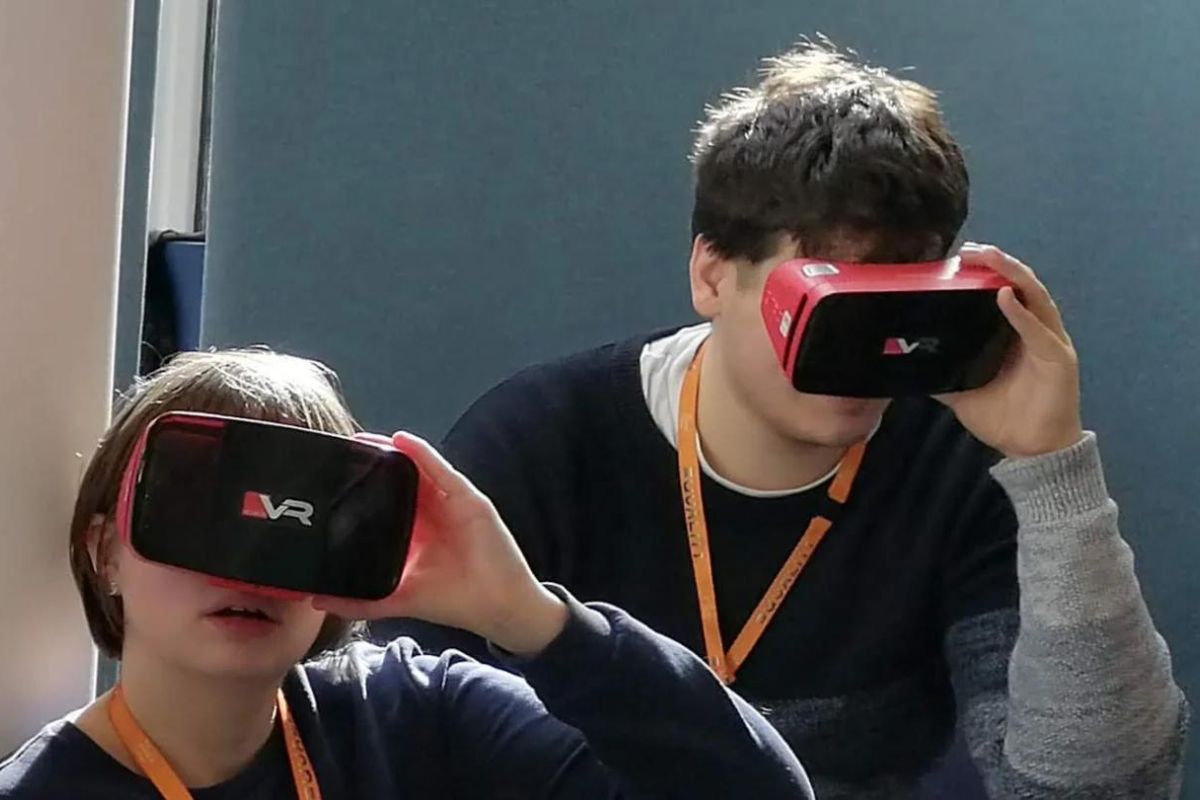Maths that feels good – Creating learning resources for blind students

An international team of researchers has developed a method for easily creating textbooks in Braille, with an initial focus on maths textbooks.
Mathematics and science Braille textbooks are expensive and time-consuming to produce, but thanks to innovations developed at the University of Birmingham and institutions in the US, this could soon change.
A team that includes experts from Towson University, in Maryland, the University of Puget Sound, in Washington, and the National Federation of the Blind, as well as from the University of Birmingham, has developed an online system that will overcome some of the main challenges to producing a Braille version of a textbook. These include representing the structure and the layout of the book – since in Braille all letters are the same size and shape – and representing maths formulas, graphs and diagrams.
Mathematical formulas are typically represented using the Nemeth Braille Code, initially developed in the 1950s. The Nemeth Braille in this project is produced by an open source system called Speech Rule Engine, which operates within MathJax, a software package designed to display maths formulas on webpages.
Dr Volker Sorge, of the School of Computer Science at the University of Birmingham, is a member of the MathJax consortium working on the project. He says:
“We have made great progress in having MathJax produce accessible maths content on the web, so the conversion to Braille was a natural extension of that work.”
The project as a whole was initially set up by Martha Siegel, a Professor Emerita from Towson University, and Al Maneki, a retired NSA mathematician serving as a senior STEM advisor to the National Federation of the Blind in the US. This led to a larger collaboration, formed in January 2019, with the help of the American Institute of Mathematics, through its connections in the maths research and maths education communities.
“This project is about equity and equal access to knowledge,” comments Professor Siegel.
“Some people have the mistaken notion that online versions and screen readers eliminate the need for braille,” commented project co-leader Al Maneki.
Sighted learners need to spend time staring at formulas, looking back and forth and comparing different parts. In the same way, a braille formula enables a person to touch and compare various pieces. Having the computer pronounce a formula for you is not adequate for a blind reader, any more than it would be adequate for a sighted reader.
Braille text in the project is produced using a system called PreTeXt, developed by Professor Rob Beezer, at the University of Puget Sound in Washington. PreTeXt is used to automatically produce text in print, online and other versions – innovations by the team mean that Braille can be produced as one more output format.
The production of tactile images is the most difficult problem faced in producing braille textbooks. Akexei Kolesnikov, a maths professor at Towson University in Maryland, is the lead developer for the image processing in this project. Ongoing work will create new ways for describing images with the goal of automating the production of non-visual representations.
Full details of the project will be announced during three talks on Thursday, January 16, 2020, at the conference Joint Mathematics Meetings in Denver, Colorado.
This work was supported by National Science Foundation grants DUE-1821706 and DMS-1638535, and a grant from the American Action Fund for Blind Children and Adults, affiliated with The National Federation of the Blind. The Big Ten Academic Alliance supported the implementation of Nemeth in the Speech Rule Engine and its integration into MathJax.












Responses